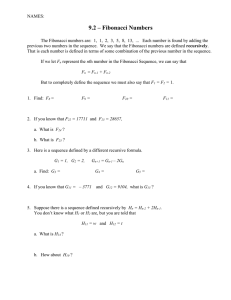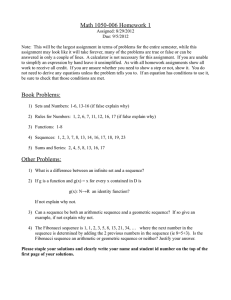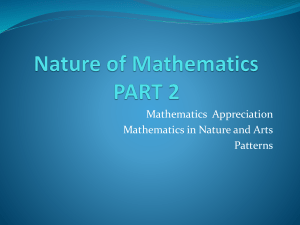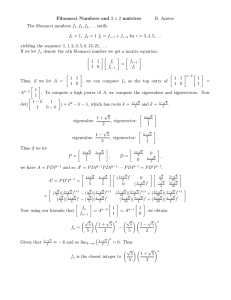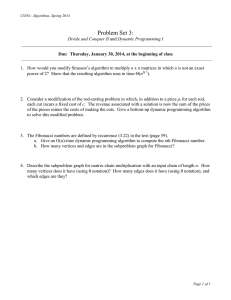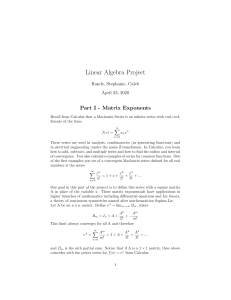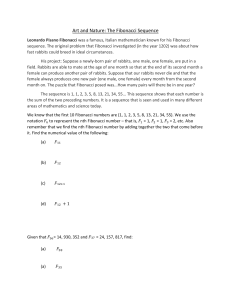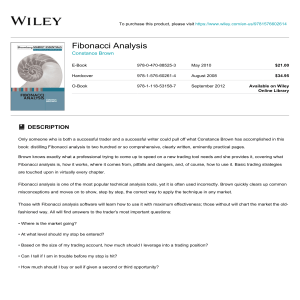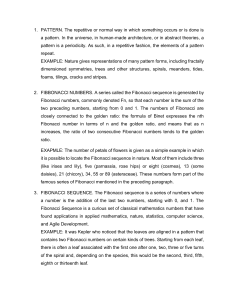College Bound Math Problem Set #7 week of November 17, 2014
advertisement
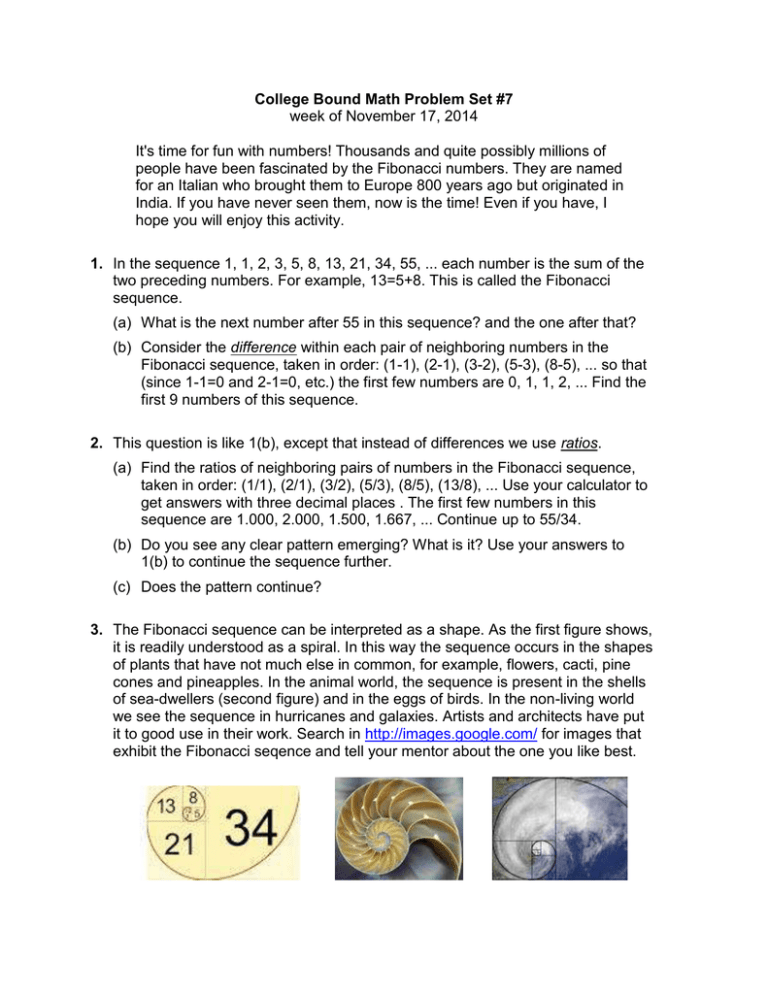
College Bound Math Problem Set #7 week of November 17, 2014 It's time for fun with numbers! Thousands and quite possibly millions of people have been fascinated by the Fibonacci numbers. They are named for an Italian who brought them to Europe 800 years ago but originated in India. If you have never seen them, now is the time! Even if you have, I hope you will enjoy this activity. 1. In the sequence 1, 1, 2, 3, 5, 8, 13, 21, 34, 55, ... each number is the sum of the two preceding numbers. For example, 13=5+8. This is called the Fibonacci sequence. (a) What is the next number after 55 in this sequence? and the one after that? (b) Consider the difference within each pair of neighboring numbers in the Fibonacci sequence, taken in order: (1-1), (2-1), (3-2), (5-3), (8-5), ... so that (since 1-1=0 and 2-1=0, etc.) the first few numbers are 0, 1, 1, 2, ... Find the first 9 numbers of this sequence. 2. This question is like 1(b), except that instead of differences we use ratios. (a) Find the ratios of neighboring pairs of numbers in the Fibonacci sequence, taken in order: (1/1), (2/1), (3/2), (5/3), (8/5), (13/8), ... Use your calculator to get answers with three decimal places . The first few numbers in this sequence are 1.000, 2.000, 1.500, 1.667, ... Continue up to 55/34. (b) Do you see any clear pattern emerging? What is it? Use your answers to 1(b) to continue the sequence further. (c) Does the pattern continue? 3. The Fibonacci sequence can be interpreted as a shape. As the first figure shows, it is readily understood as a spiral. In this way the sequence occurs in the shapes of plants that have not much else in common, for example, flowers, cacti, pine cones and pineapples. In the animal world, the sequence is present in the shells of sea-dwellers (second figure) and in the eggs of birds. In the non-living world we see the sequence in hurricanes and galaxies. Artists and architects have put it to good use in their work. Search in http://images.google.com/ for images that exhibit the Fibonacci seqence and tell your mentor about the one you like best.
